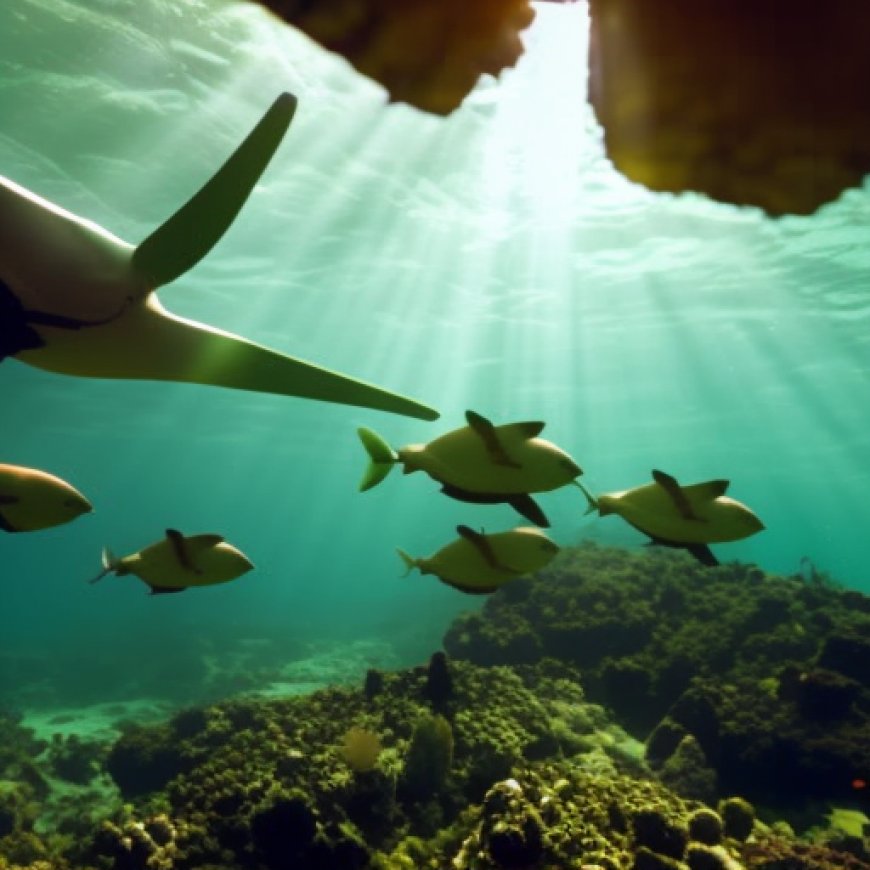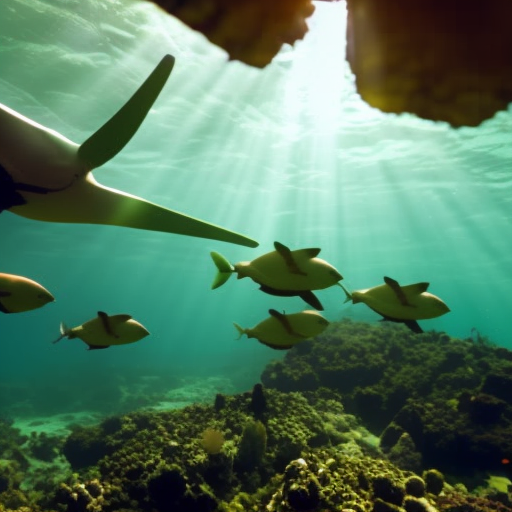Could Offshore Wind Farms Become Aquatic Sanctuaries? A Biologist Explains
Could Offshore Wind Farms Become Aquatic Sanctuaries? A Biologist Explains Forbes


Decommissioning Offshore Wind Farms: Evaluating Their Potential as Artificial Reefs
Ask any fisherman and they’ll tell you that fishing near the site of a known shipwreck is a sure-shot way to find fish. Shipwrecks create what scientists call “marine artificial structures”–providing an oasis of life in the otherwise vacant and desert-like seabed. Shellfish attach to the reef-like structures, smaller fish are lured in by the shellfish, and bigger fish move in to feed on the little fish. Like this, the cycle perpetuates.
Introduction
Proponents of offshore wind argue that the same process could occur in and around offshore wind farm sites–creating new opportunities for aquatic life where none previously existed. This, they suggest, offsets some of the negative marine effects posed by the projects.
Evaluating the Claim
New research published in Nature Sustainability evaluates this claim–examining, specifically, whether offshore wind farms could be decommissioned as “artificial reefs,” thus benefiting the local marine ecosystem.
Key Findings
The authors, led by Anaëlle Lemasson of the University of Plymouth in the United Kingdom, conclude that while marine artificial structures can bring certain ecological benefits, there is limited evidence that decommissioning offshore wind farms as artificial reefs would positively impact the marine ecosystem. Here are three takeaways from their research.
- Decommissioned Offshore Wind Farms May Not Help The Underwater Ecosystem, But They Won’t Hurt It Either
Examining data from 109 published studies, the researchers found that offshore wind farms had a neutral effect on underwater habitats on metrics including ecological abundance, diversity, biomass, reproduction and behavior.
The authors state, “In theory, if offshore wind farms acted as artificial reefs, decommissioning them by toppling, topping or reefing them […] could assist nations in reaching their environmental targets and achieve environmental net gain. However, we found no evidence to support or rebut the common assumption that these structures function as artificial reefs.”
“With that said, we found no evidence that reefing them would cause harm or be detrimental (for example, by reducing local biodiversity); thus, they may provide a viable option to enhance ecological benefits on natural sedimentary habitats, notwithstanding potential unforeseen consequences such as facilitating the spread of invasive species.”
- Fish May Benefit More From Offshore Wind Farms Than Marine Invertebrates
The single statistically significant benefit identified by the researchers was an increase in the abundance of fish in and around offshore wind farms. This was not true of marine invertebrates (such as starfish, crustaceans and jellyfish).
Interestingly, the diversity of fish species found at offshore wind farm sites was unaffected. In other words, more fish were found at these sites, but not more species of fish.
- Shipwrecks Help The Underwater Ecosystem More Than Offshore Wind Farms
The fisherman’s wisdom–that fish tend to coalesce around shipwrecks–is borne out by the data.
“Shipwrecks supported significantly greater abundances of both fish and invertebrates,” state the authors.
This raises an important question for future research: What is it about shipwrecks that create the conditions necessary for improved underwater ecosystems, and how might we be able to apply such learnings to offshore wind construction, maintenance and decommissioning?
Moreover, aside from the possibility of offshore wind sites enhancing underwater biodiversity, other ecological benefits have been theorized. For instance, scientists speculate that wind farms may produce a “sheltering” effect on ocean ecosystems, closing off large corridors to shipping and fishing activity. Other research suggests that offshore wind farms may be combined with aquacultural projects.
It is up to the scientific and engineering community to continue investigating whether the positives of offshore wind development outweigh the negatives.
There are, at present, hundreds of offshore wind farms producing energy around the world, with China, Germany and the U.K. leading the race. Many more are expected to be brought into service over the next decade.
1. Which SDGs are addressed or connected to the issues highlighted in the article?
- SDG 14: Life Below Water – The article discusses the impact of offshore wind farms on the marine ecosystem and the potential benefits or harm they may cause.
- SDG 15: Life on Land – The article mentions the potential ecological benefits of offshore wind farms and how they could enhance biodiversity in natural sedimentary habitats.
2. What specific targets under those SDGs can be identified based on the article’s content?
- SDG 14.2: By 2020, sustainably manage and protect marine and coastal ecosystems to avoid significant adverse impacts, including by strengthening their resilience, and take action for their restoration in order to achieve healthy and productive oceans – The article discusses the impact of offshore wind farms on underwater habitats and whether they can function as artificial reefs to benefit the marine ecosystem.
- SDG 15.5: Take urgent and significant action to reduce the degradation of natural habitats, halt the loss of biodiversity, and protect and prevent the extinction of threatened species – The article mentions the potential benefits of offshore wind farms in enhancing ecological benefits on natural sedimentary habitats.
3. Are there any indicators mentioned or implied in the article that can be used to measure progress towards the identified targets?
- Ecological abundance, diversity, biomass, reproduction, and behavior of underwater habitats – These metrics are mentioned in the article to evaluate the impact of offshore wind farms on marine ecosystems.
- Abundance of fish and marine invertebrates – The article highlights the increase in fish abundance around offshore wind farms compared to marine invertebrates.
4. Table: SDGs, Targets, and Indicators
| SDGs | Targets | Indicators |
|---|---|---|
| SDG 14: Life Below Water | 14.2: By 2020, sustainably manage and protect marine and coastal ecosystems to avoid significant adverse impacts, including by strengthening their resilience, and take action for their restoration in order to achieve healthy and productive oceans | – Ecological abundance, diversity, biomass, reproduction, and behavior of underwater habitats – Abundance of fish and marine invertebrates |
| SDG 15: Life on Land | 15.5: Take urgent and significant action to reduce the degradation of natural habitats, halt the loss of biodiversity, and protect and prevent the extinction of threatened species | – Ecological abundance, diversity, biomass, reproduction, and behavior of underwater habitats – Abundance of fish and marine invertebrates |
Behold! This splendid article springs forth from the wellspring of knowledge, shaped by a wondrous proprietary AI technology that delved into a vast ocean of data, illuminating the path towards the Sustainable Development Goals. Remember that all rights are reserved by SDG Investors LLC, empowering us to champion progress together.
Source: forbes.com

Join us, as fellow seekers of change, on a transformative journey at https://sdgtalks.ai/welcome, where you can become a member and actively contribute to shaping a brighter future.







